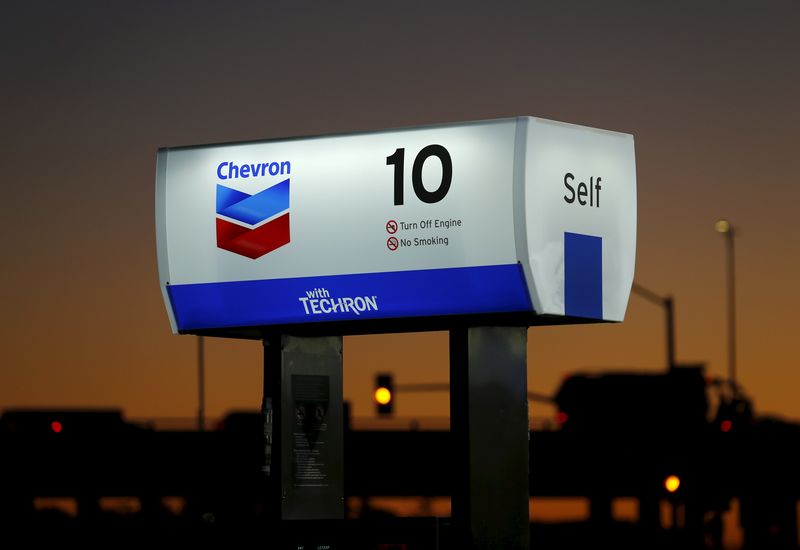© Reuters. A general view of Chevron’s Wheatstone LNG facility in Pilbara coast, Western Australia, as seen in this undated handout image obtained by Reuters on September 8, 2023. Chevron/Handout via REUTERS
By Emily Chow and Lewis Jackson
SINGAPORE/SYDNEY (Reuters) – Workers at Chevron (NYSE:)’s liquefied (LNG) projects in Australia, which produce 5.1% of the world’s supply of the super-chilled fuel, went on strike on Friday after mediation talks ended without a deal.
WHAT’S NEXT?
Unions kicked off action with short work stoppages and bans on certain tasks, but plan to escalate to a total strike within two weeks if there is no deal.
Until next Wednesday, workers will stop work for up to 11 hours in several blocks per day and refuse to perform certain tasks, including working overtime. If there is still no deal by then, the unions will completely stop work for two weeks.
A week of negotiations run by a federal mediator ended on Friday without agreement, and no further talks are planned for now.
A union representative who declined to be named told Reuters on Friday the union remained available for talks but added: “we’ll be digging in for extensive [protected industrial] action.”
Chevron has said it would continue to take steps to maintain operations if any disruptions occur, without giving details.
WHAT WILL BE THE IMPACT ON PRICE AND OUTPUT?
Australia was the world’s largest LNG exporter last year, shipping out 80.9 million metric tons of the fuel in 2022 versus 79 million tons in 2021, according to the International Gas Union.
The bulk of LNG exports from Chevron’s Gorgon and Wheatstone facilities head to Japan, followed by South Korea, China and Taiwan.
“We expect an unscheduled outage will likely deliver some short-term spot price volatility, given we believe the global LNG market remains finely balanced,” said National Australia Bank (OTC:) (NAB) analyst Baden Moore.
“Duration of the outage will be critical.”
Based on preliminary calculations by data intelligence firm ICIS, the work stoppages through to Sept. 14 would see limited impact, with around 95,000 tons or one-and-a half cargoes worth of LNG output removed from the market.
Escalations into a full-scale strike would see a wider-ranging impact on output.
HOW LONG WILL INDUSTRIAL ACTION LAST?
Several industry experts have downplayed the risk of a prolonged strike, pointing to short delays this week by the union in starting action, as well as the recent resolution of a similar impasse with LNG workers at Woodside (OTC:) Energy Group, as positive signs.
NAB’s Moore said that Woodside’s negotiations with the unions are likely to provide a useful benchmark to finalise terms for Chevron.
WHAT’S AT STAKE FOR LNG MARKETS?
A prolonged strike could disrupt exports and raise prices of LNG, which is used for electricity generation.
European gas prices have been volatile in recent weeks over the labour unrest in Australia and spiked as much as 14% after Friday’s news.
Volatility in global gas prices despite relatively high inventories across Asia and Europe underscores market sensitivity to potential disruptions, which has increased for most commodities after Russia’s invasion of Ukraine last year led to a spike in prices.
WHAT’S THE DISAGREEMENT?
The two sides are at odds over issues including pay, job security, rosters and rules around overtime and transfers between Chevron facilities.
The failure to reach a deal contrasts with Woodside, which averted strikes at its nearby North West Shelf LNG facility last month in a deal with the same unions. The agreement included higher salaries for workers, and made it harder for the company to hire contractors or change rosters.
The same union alliance also secured agreements last year with Shell (LON:) and Inpex at their LNG facilities in Western Australia. The deal with Shell was preceded by prolonged strikes that ultimately cost the company about $1 billion in lost exports from its Prelude floating LNG site.
Chevron said the unions had demanded terms “above and beyond” others in the industry. The unions said pay demands were in line with agreements struck at Shell, Inpex and Woodside.
The union alliance has previously said it locked in base annual pay between A$265,000 and A$365,000 in its deal with Woodside.
Read the full article here




